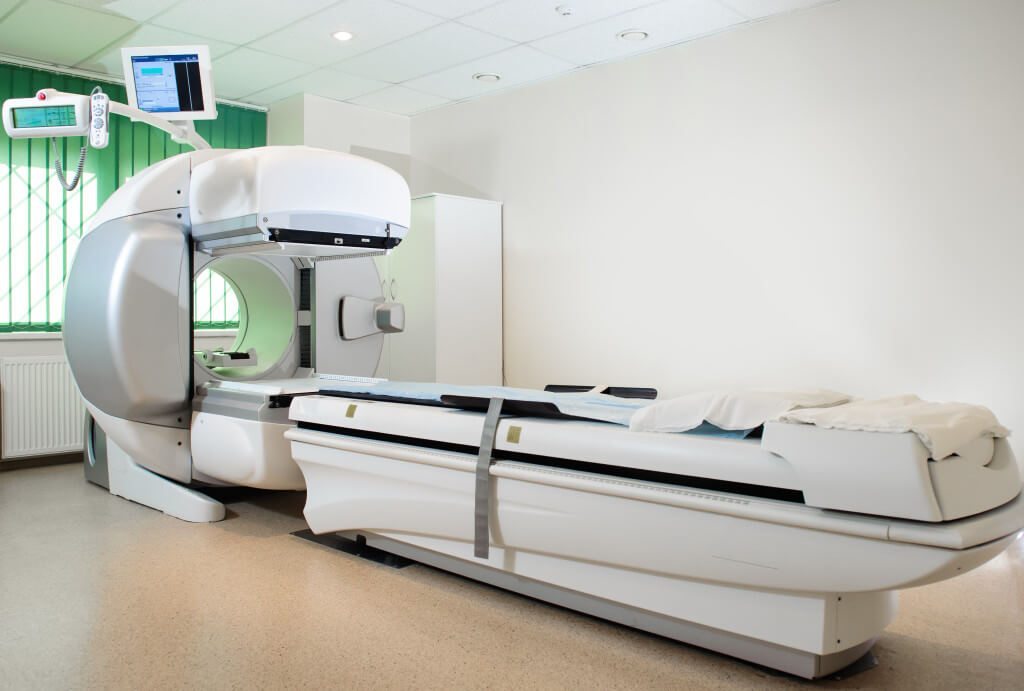Mesothelioma Radiation Treatment

Radiation therapy for mesothelioma uses X-rays or similar forms of radiation to destroy cancer cells and shrink tumors. It usually is accompanied by surgery and/or chemotherapy as part of multimodal therapy.
Radiation therapy may be administered to patients with malignant pleural mesothelioma, but it is generally not an option for peritoneal mesothelioma patients due to the risk of damage to the abdominal organs.
While damage to healthy tissue in the pleural cavity is also a risk, studies and clinical practice have demonstrated enough positive effects of mesothelioma radiation therapy for pleural mesothelioma that it is considered a standard treatment option.
The goal of any cancer treatment is to maximize benefits while minimizing side effects. A radiation oncologist—a doctor who specializes in treating cancer with radiation—can explain to you the pros and cons of radiation therapy for your mesothelioma and which type of radiation is best-suited to your disease.
Because mesothelioma is a rare cancer, you should seek care from a facility that specializes in treating the disease.
Use our interactive map to find a mesothelioma treatments center near you.
https://www.mesotheliomahelp.org/mesothelioma-hospitals-doctors/
How Radiation Therapy Works
Radiation is a form of energy. High doses of radiation can damage the DNA in cells and even kill cells. Cell mutations can also result from exposure to radiation and lead to cancer. That’s why exposure to ultraviolet radiation from the sun or nuclear radiation from power plants can cause cancer.
Ironically, radiation can also be used to kill cancer. Radiation therapy, however, is a local therapy that targets specific areas of the body. Doctors can hone in on tumors with a great degree of accuracy and for the most part spare healthy tissue.
Cancer cells, furthermore, have greater sensitivity to radiation than most normal cells due to their rapid growth and division and limited ability to repair their DNA. Some damage to healthy cells from radiation therapy is virtually inevitable. Patients undergoing radiation therapy can therefore expect some complications and side effects. Side effects typically subside once treatment is over, and your doctor can recommend ways to help control symptoms.
Types of Radiation Therapy
Radiation alone is unlikely to completely eradicate mesothelioma, but it may be used in combination with surgery in an attempt to eliminate the disease or used to relieve symptoms, improve quality of life, and prolong survival.
Adjuvant Radiation
Adjuvant radiation is given after surgery for stages I through III patients as a means of killing any small areas of remaining cancer cells. This option may be effective for those facing a high risk of recurrence. It can also be used after surgery and in conjunction with chemotherapy for stages I through III patients.
Radiation therapy is less commonly given prior to surgery. The “SMART” (Surgery for Mesothelioma After Radiation Therapy) trial evaluated the feasibility of radiation therapy followed by extrapleural pneumonectomy and the results were encouraging.
Palliative Radiation
Palliative radiation can be used for advanced stage patients as a means of relieving the typical symptoms—such as bleeding, pain, shortness of breath and difficulty swallowing—that come with mesothelioma.
![]()
External Beam Radiation Therapy
External beam radiation therapy (EBRT) is the radiation method predominantly used to treat mesothelioma patients. It is similar to getting an x-ray — and just as painless — but the radiation is stronger.
During treatment the x-ray beams are aimed at a defined area to kill the cancer cells. The treatments last just a few minutes, but the preparation time takes longer because the medical team needs to correctly calculate the angle of the beams and determine the proper dosage. Patients typically undergo this treatment five days per week for a period of five to six weeks. In addition, a concentrated treatment known as a boost may be delivered to a smaller area of cancer cells.
![]()
Intensity-Modulated Radiation Therapy
A relatively new EBRT technique known as intensity-modulated radiation therapy (IMRT) more accurately directs the radiation to the affected area. This method uses three-dimensional conformal radiation therapy (3D-CRT), which is delivered by a machine that moves around the patient’s body. The radiation beams can conform to the size of the patient’s tumor and attack it from multiple angles. The beams’ intensity can also adjust throughout the procedure, which helps protect the surrounding healthy tissues.
![]()
Brachytherapy
Brachytherapy is used for certain cancers but is rarely used to treat mesothelioma. This type of treatment involves having a radiation source inserted internally, near the site of the cancer cells. This helps protect healthy tissues from damage, since the radiation can travel to the cancer quickly.
Complications and Common Side Effects
Radiation treatments often cause complications because of the damage caused to healthy tissues. Fatigue is the most common complaint of mesothelioma patients undergoing radiotherapy. Patients who undergo EBRT also commonly experience skin changes (similar to a sunburn). If the radiation is concentrated in the chest, side effects may include breathing complications, sore throat, difficulty swallowing and lung damage. Patients who receive radiation therapy in the abdominal area have reported nausea, diarrhea and vomiting. Patients should discuss any side effects they experience with their medical team so that doctors and nurses can suggest a management strategy.
